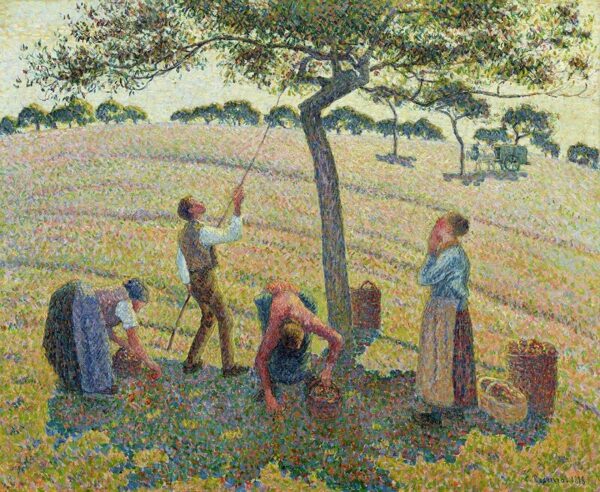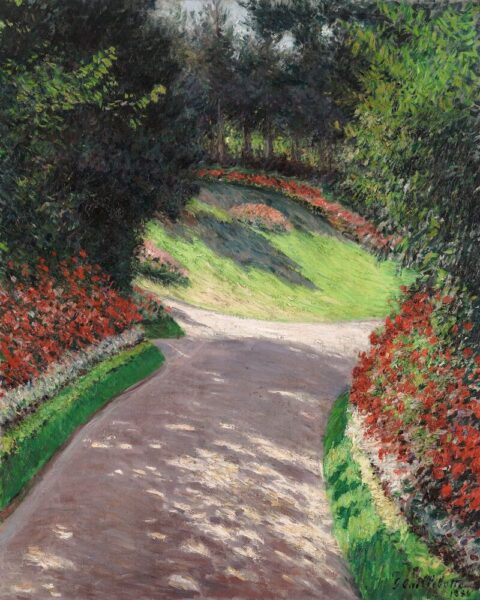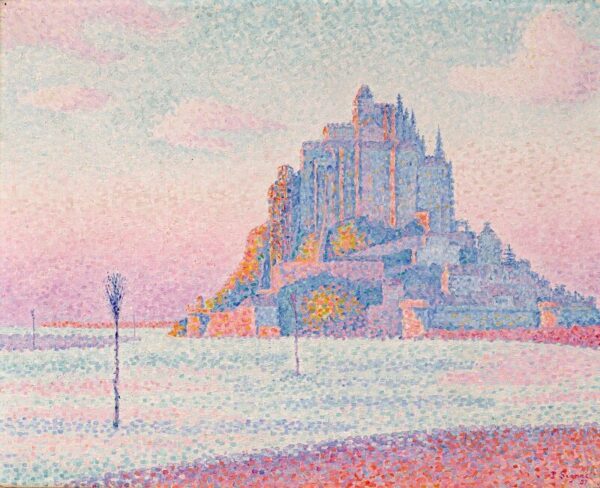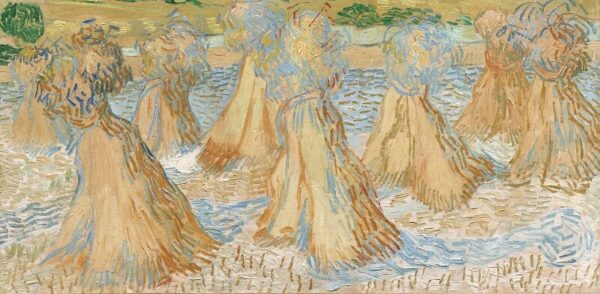Two major exhibitions of Impressionism and its artistic offspring are on view in Santa Barbara, and together they form an excellent sampling of the movement that got painters out of their studios and into the real world. It changed things forever.
The Impressionist Revolution: Monet to Matisse From the Dallas Museum of Art, along with its companion, Encore: 19th Century French Art From the Santa Barbara Museum of Art, display more than 100 works, including paintings by most of the major figures of Impressionism.
The movement made its debut a century and a half ago, at a less-than-successful exhibition in Paris in 1874. The academic style then in vogue had often featured historical subjects and highly finished aristocratic portraits made in studios. (Think Jacques-Louis David’s portraits of Napoleon on his rearing white horse.)
Impressionism, by contrast, looked at ordinary French people going about their lives in the real world. As a wall label notes, these artists were helped by the invention of portable, premixed oil paint in resealable metal tubes, as well as the growth of the French railroad system. Both allowed artists to work easily outside their studios.

One of the greatest of these Impressionists was Claude Monet, who is represented by seven works in the show from Dallas, plus another four from Santa Barbara. Valle Buona, Near Bordighera of 1884 (above and top image) depicts the rugged landscape above the Italian Riviera, just over the French border, where the artist spent three months working. The painting shows some of the essential features of Impressionism: a real-world subject, loose brushwork, and a combination of different colors in close proximity. The picture glows.

Camille Pissarro’s Apple Harvest of 1888 takes a similar approach, with farm people going about their job of picking apples from a tree. The scene itself is simple: With a yellow-green field in the background, a man uses a long pole to pull the apples off the tree, while two women collect them from the ground and fill their baskets. Another woman looks on. What’s remarkable about the painting isn’t the subject; it’s how the painter uses a Pointillist style, first developed by Georges Seurat. According to a wall label, “dots of pure red, blue, green, pink, lavender, orange, and yellow recreate the dazzling light of the afternoon sun.”

Margaret McDermott Art Fund Inc., bequest of Mrs. Eugene McDermott.
A different sort of verdant landscape is depicted in The Path to the Garden of 1886 by Gustave Caillebotte, a lesser-known painter who exhibited in the first Impressionist exhibition along with Monet and Pisarro. (He was a wealthy man who befriended several members of the movement and was the subject of a major exhibition earlier this year at the J. Paul Getty Museum in Los Angeles.)
Caillebotte co-owned the garden depicted in the painting with his brother, and he regularly visited and painted it at the family’s country estate outside Paris. With the painting’s vertical framing, the wide downhill pathway bordered by red flowers and green grass draws your eye deep into the sunny background. It’s a simple but effective visual strategy.

honor of Bill Booziotis.
Paul Signac, who began his career as a Pointillist and protégé of Paul Seurat, adapts that technique in Mont Saint-Michel, Setting Sun of 1897. Rather than using dots of unmixed paint, he expands them into small patches of bright color to depict the famous monastery and village perched on a small mountain just off the coast of Normandy. Signac relies mostly on a pink-and-blue color scheme to define both the craggy building and mountain as well as the surrounding sky and sea.

Vincent Van Gogh, normally considered a Post-Impressionist, is represented by Sheaves of Wheat, completed in July 1890, just days before his death by suicide. His work grew more abstract and seemingly tormented in his last years, and this painting is no exception. Within the tightly framed image the sheaves of harvested wheat look almost like small yellow volcanoes standing next to an equally abstract blue stream or field in the background.

Henri Matisse’s Pont Saint-Michel of 1901 is a relatively early work, before he became a leader of the Fauve movement. Depicting a bridge over the Seine, mostly in flat blues and greens, it seems more like an experiment in the use of color than an attempt at a realistic landscape. That’s the basis of Fauvism, which became the alternative to Cubism in the first decade of the new century, and more or less the opposite of Pointillism. As the saying goes, the more things change…
The Impressionist Revolution: Monet to Matisse From the Dallas Museum of Art runs through January 25, 2026, at the Santa Barbara Museum of Art, 1130 State Street, Santa Barbara, California. The exhibition opened in Dallas in 2024 and was on view at the Museum of the Palace of Fine Arts in Mexico City earlier this year. A catalog is published by the Dallas Museum of Art and distributed by Yale University Press. The show is accompanied by Encore: 19th-Century French Art From the Santa Barbara Museum of Art.
Top image: Claude Monet (1840-1926), Valle Buona, Near Bordighera (detail), 1884, oil on canvas; Dallas Museum of Art, gift of the Meadows Foundation Inc.
